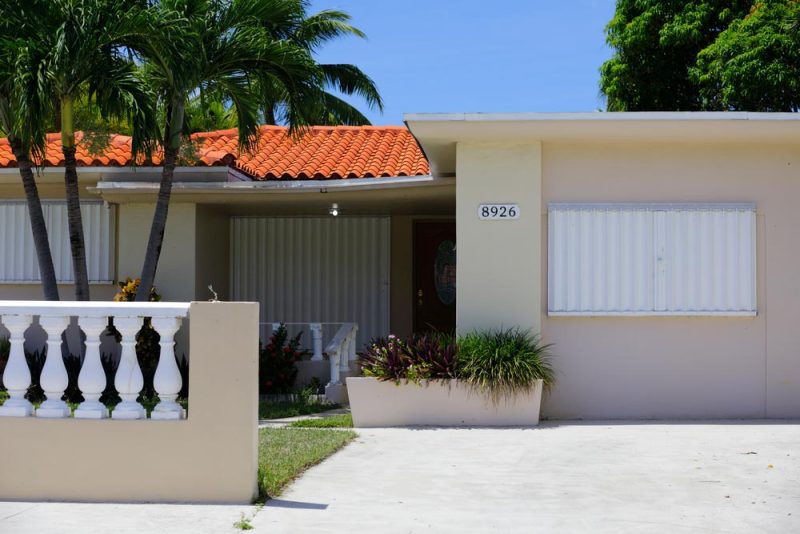As homeowners, protecting our homes and loved ones during severe weather events is a top priority. Storm shutters and storm screens are essential tools for safeguarding windows and doors from the destructive forces of hurricanes, tornadoes, and high winds. Here are answers to common questions about storm shutters and storm screens, helping you make informed decisions to fortify your home or commercial building against the elements and ensure peace of mind during storm season.

Storm shutters and storm screens are protective coverings installed over windows and doors to shield them from high winds, flying debris, and other hazards during severe weather events. Storm shutters are typically made of metal, wood, or composite materials and are designed to cover windows and doors completely. Storm screens, on the other hand, are made of tightly woven mesh or fabric and are attached to the exterior of windows and doors to provide protection while allowing light and airflow.
The primary benefit of installing storm shutters and storm screens is protection against damage caused by severe weather. By covering windows and doors, storm shutters and storm screens help prevent broken glass, water intrusion, and structural damage during hurricanes, tornadoes, and other storms. Additionally, storm shutters and storm screens can enhance home security by deterring intruders and preventing forced entry.
In some coastal areas prone to hurricanes and severe weather, building codes and insurance companies may require or incentivize the installation of storm shutters or storm screens. It’s essential to check local building codes and consult with your insurance provider to determine if storm protection measures are required or recommended for your home.
There are several types of storm shutters available, each with its own advantages and considerations:
Roll-down shutters: Roll-down shutters are mounted above windows and doors and can be manually or automatically rolled down to cover openings. They provide excellent protection and can be operated quickly and easily.
Accordion shutters: Accordion shutters are hinged panels that fold accordion-style to cover windows and doors. They are durable and easy to operate, making them a popular choice for storm protection.
Bahama shutters: Bahama shutters are louvered shutters mounted above windows and doors and hinged at the top. They provide both storm protection and shade and can add a decorative touch to your home.
Colonial shutters: Colonial shutters are decorative hinged panels that fold over windows and doors for storm protection. They offer a traditional aesthetic and are available in a variety of styles and finishes.
Storm screens offer similar protection to storm shutters but with some differences in terms of convenience and aesthetics. Storm screens are typically lightweight and easy to install and remove, making them a popular choice for homeowners who prefer temporary storm protection. Additionally, storm screens allow light and airflow to pass through, maintaining visibility and ventilation during storms.
While storm shutters and storm screens are highly effective at protecting windows and doors from high winds and flying debris, they may not be sufficient to withstand all types of severe weather events. For example, in areas prone to flooding or extreme wind speeds, additional measures such as reinforced windows and doors or storm-resistant building materials may be necessary to ensure adequate protection.
To ensure optimal performance and longevity, it’s essential to maintain storm shutters and storm screens regularly. This includes cleaning them periodically to remove dirt, debris, and salt buildup, inspecting them for damage or wear, and lubricating hinges and tracks as needed. Additionally, it’s essential to test the operation of storm shutters and storm screens regularly to ensure they function correctly when needed.
Storm shutters and storm screens can typically be installed on most types of windows and doors, including single-hung windows, double-hung windows, sliding glass doors, and French doors. However, it’s essential to consult with a professional installer to determine the best type of storm protection for your specific windows and doors and ensure proper installation and compatibility.
The cost of storm shutters and storm screens can vary depending on factors such as the type of material, size of the openings, and installation method. Generally, storm shutters tend to be more expensive than storm screens due to their durability and permanent installation. However, both storm shutters and storm screens are considered worthwhile investments for homeowners in storm-prone areas, as they can help prevent costly damage and protect property values during severe weather events.
Storm shutters and storm screens are essential components of any home’s storm preparedness plan, providing vital protection against the destructive forces of hurricanes, tornadoes, and high winds. By understanding the benefits, considerations, and options for storm protection, homeowners can make informed decisions to safeguard their homes and loved ones during storm season and beyond. For personalized advice and assistance with storm shutter and storm screen installation, contact Bayfront Exteriors home improvement professionals today!

